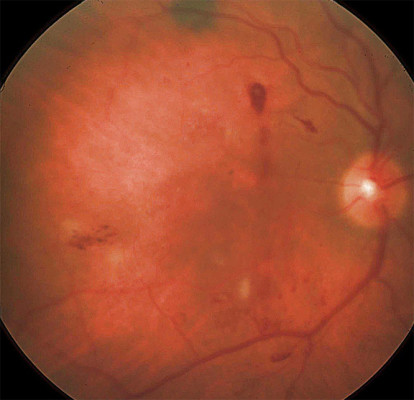Back to Journals » Clinical Ophthalmology » Volume 3
Efficacy of patterned scan laser in treatment of macular edema and retinal neovascularization
Authors Modi, Chiranand P, Akduman L
Published 6 August 2009 Volume 2009:3 Pages 465—470
DOI https://doi.org/10.2147/OPTH.S6486
Review by Single anonymous peer review
Peer reviewer comments 3

Dimple Modi, Paulpoj Chiranand, Levent Akduman
Saint Louis University School of Medicine, Department of Ophthalmology, Saint Louis University Eye Institute, St. Louis, Missouri, USA
Purpose: To analyze the benefits, efficacy, and complications of the PASCAL® photocoagulation laser system (OptiMedica, Santa Clara, CA, USA) in patients treated at our institution.
Methods: We conducted a retrospective chart review of 19 patients (28 eyes) who underwent laser treatment using the PASCAL® photocoagulation system from November 2006 to November 2007. These 28 eyes were divided into two groups; group 1 eyes underwent macular grid laser and group 2 eyes underwent panretinal photocoagulation. Treatment was performed for macular edema or for iris or retinal neovascularization. Outcomes measured included best-corrected visual acuity (BCVA), efficacy of laser treatment, complications, duration of the procedure, and pain perception, which were noted in the charts for panretinal treatments.
Results: Follow-up was 5.9 ± 2.6 months for group 1 and 5.9 ± 4.0 months for group 2. In group 1, 9/28 eyes required a second treatment for remaining edema. BCVA was stable or better in 66% (14/21) and average central foveal thickness on ocular coherence tomography improved in 71% (15/21). Time to completion for a number of laser patterns for grid photocoagulation was felt to be too long for completing the total pattern safely, although we have not noted any related complications. In group 2, the neovascularization regressed at least partially in 3/7 patients. Patient-reported pain perception was 3.6 on a scale of 1 to 10 for group 2. Occasional hemorrhages occurred secondary to irregular laser uptake at different spots in the patterns. We observed no visual outcome consequences because of these hemorrhages during follow-up.
Conclusions: Retinal photocoagulation by the PASCAL® laser has comparable efficacy to historical results with conventional retinal photocoagulation in short-term follow-up. PASCAL® photocoagulation can be performed quicker with less discomfort for patients.
Keywords: diabetic retinopathy, laser, macular edema, PASCAL, patterned scan laser, photocoagulation, retinal neovascularization
 © 2009 The Author(s). This work is published and licensed by Dove Medical Press Limited. The full terms of this license are available at https://www.dovepress.com/terms.php and incorporate the Creative Commons Attribution - Non Commercial (unported, v3.0) License.
By accessing the work you hereby accept the Terms. Non-commercial uses of the work are permitted without any further permission from Dove Medical Press Limited, provided the work is properly attributed. For permission for commercial use of this work, please see paragraphs 4.2 and 5 of our Terms.
© 2009 The Author(s). This work is published and licensed by Dove Medical Press Limited. The full terms of this license are available at https://www.dovepress.com/terms.php and incorporate the Creative Commons Attribution - Non Commercial (unported, v3.0) License.
By accessing the work you hereby accept the Terms. Non-commercial uses of the work are permitted without any further permission from Dove Medical Press Limited, provided the work is properly attributed. For permission for commercial use of this work, please see paragraphs 4.2 and 5 of our Terms.
